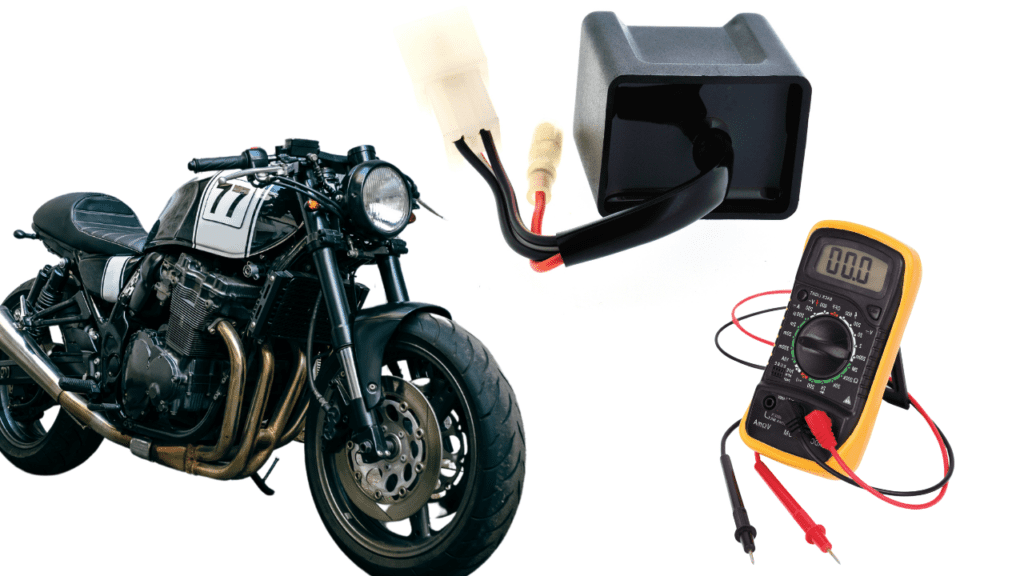
How to test a CDI box with a multimeter
Content
In your vehicle, CDI is one of the The most important Components. What is a CDI box and what does a CDI box do?
On a motorcycle, the CDI is a black box under the seat that acts as a heart your ignition system. It is an electronic component that replaces pre-1980 mechanical ignition processes and without it your motorcycle cannot run.
However, as with any other component of your bike, there are problems with diagnosing it. can be tough.
This article introduces you All you need to know about the CDI box. Let's get started.
How CDI Works
Here is the component system in CDI:
When the key is turned, the rotating magnet induces up to 400 VAC in the exciter coil. When this coil becomes positive, charge is directed to the forward biased diode until the capacitor is fully charged (typically after 3-4 turns of the magnet).
Once the capacitor is charged, the impulse rotor sends a trigger to the SCR, which in turn initiates a conduction process that immediately discharges the capacitor. This sudden discharge causes a sudden voltage spike in the ignition coil.
A strong current is created on both spark plug contacts and this provides power to the engine.
The ignition switch grounds all excess voltage.
Symptoms of bad CDI
Of course, before getting into your CDI, you want to make sure that there are problems with it. Here are some of the symptoms your bike may be showing that indicate problems with CDI.
- Engine misfire
- dead cylinder
- Unusual tachometer behavior
- Ignition problems
- Engine stalls
- Reverse engine
These symptoms are problems with certain components of the CDI box. For example, engine misfires can be caused by either worn spark plugs or a worn ignition coil. A dead cylinder can also be caused by a bad ignition coil or bad diode.
Pinpointing the problem will help you easily fix or replace it, as well as restore your ignition system to working order.
How do you define these issues? A multimeter proves helpful throughout the process, and here's how you test your CDI box with it.
Tools needed for CDI troubleshooting
All you need is yours;
- CDI box
- Multimeter, which is also useful for testing other electronic components.
Before moving forward, you also need to take safety precautions and keep yourself safe. These measures include wearing protective and waterproof gloves, as well as eye protection.

How to test a CDI box with a multimeter
To test the CDI box, you disconnect it from the bike, use the positive and negative leads of a multimeter to test for continuity, and listen for a beep that signals a malfunction.
There's a lot more to this seemingly simple process, and here's more information about it.
To test CDI, you do both cold testing and hot testing. Cold testing is when you run diagnostics on the CDI unit when it is disconnected from the stator, while in hot testing it is still connected to the stator.
Do the following.
Step 1 Remove the CDI box from the bike.
This is for cold testing procedures. The CDI box is usually located under the seat of your bike. When you check you should see a blue/white wire connecting the stator and the black CDI unit together via the pin and pin headers.
Once disabled, you avoid working with CDI on any hardware for 30 minutes to an hour. As the internal capacitor discharges during this waiting process, you are doing a visual inspection of your CDI.
Visual inspections can allow you to quickly identify physical deformities on the CDI.

Step 2: Run a cold test on your CDI
Cold testing involves checking the continuity of the components of your CDI box. What you are doing is setting the multimeter to continuity mode and checking for continuity between the ground point and the other terminal points in the CDI.
If a problem exists, the multimeter beeps. You know the exact component that is having issues and fixing that component might be the solution.
Continuity problems in CDI are usually caused by problems with the SCR, diode, or internal capacitor. If these cold steps prove a bit difficult to follow, this YouTube video can help you.
Step 3: Hot test your CDI
If you don't want to disconnect the CDI from the bike, you can do a hot test. The tests are carried out on the stator side of the blue/white wire connecting it to the CDI.
To do this, you set the multimeter to 2 kΩ resistance and measure the resistance between these two points; blue wire to white wire and white wire to ground.
For the blue wire to the white wire, you test for resistance between 77 and 85. With the white wire connected to ground, you use a multimeter to test for resistance between 360 and 490 ohms. If any of these don't match, your stator may be defective and a professional mechanic may be helpful.
However, if they match, your CDI is most likely to blame.
FAQ about CDI box
How do I know if my CDI Box is defective?
You know a CDI box is bad when your motorcycle is misfiring, has dead cylinders, unusual tachometer behavior, runs rough, has ignition problems or stalls.
How to bypass the CDI block?
To bypass the CDI box, you clean your stand, remove the box, check the resistance specifications, measure the primary and secondary oil resistance, and compare the readings.
Can a bad CDI cause no spark?
A bad CDI box may not spark at all. However, your motorcycle exhibits symptoms such as ignition problems, bad cylinders, and engine stalling.
Can a bike start without CDI?
The motorcycle will not start without the CDI box as this is the component that controls the ignition system.
Are CDI boxes universal?
No. CDI boxes are not universal as the ignition systems differ depending on the vehicle model. They are either AC or DC.
How do you test a four wheel CDI box?
To test an ATV CDI box, you use a multimeter to test the fuses, ignition switch, ignition coil, electronic module, and check for loose wires.
Conclusion
The CDI box is an important component of your car's ignition system and you should take good care of it. As clear as these steps may be, hiring a professional mechanic seems like the best option.

